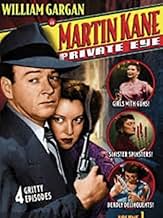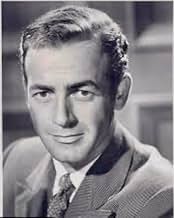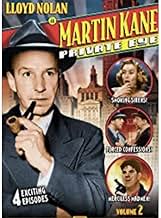One of the first shows I watched when we got our television in 1953 was "Martin Kane, Private Eye" starring Lee Tracy. I remember being disappointed when Tracy was replaced by Mark Stevens. The show's producers made a big deal about the switch. The new Martin Kane was introduced as Tracy left the series. As it turned out Mark Stevens was almost as good as Tracy in the pivotal lead role.
Recently I watched earlier live Martin Kane programs on DVD starring Lloyd Nolan. While I still prefer Lee Tracy in the part, Nolan was very good, especially considering I was viewing a Kinescope made over 50 years ago. One of the episodes I watched, "Rest Home Murder," was at times creepy and very violent, even by today's TV standards. There was a goon-like muscle man who kept the patients in line by brute force, intimidation, and even murder. Seems the head of the nursing home was a greedy woman who "took care" of the occupants to get a cut of the inheritance money from equally mercenary relatives. One of the tortured souls is able to contact Martin Kane by phone, but not without being overhead on the extension. Kane finds himself in a situation where he may very well be the next victim.
Some viewers may find the tobacco ads which are interwoven with the plot offensive. Yet the same thing goes on today in movies, if not on TV. When you see Ford or Chevy cars used exclusively in a film, then you're looking at a commercial for those companies interwoven into the plot. "Martin Kane, Private Eye" came by the method honestly. It was already a mainstay of old time radio. Most early TV programs were patterned after radio shows of the day, though I did think it quaint that the camera zeroed in on a package of Old Briar Pipe Tobacco for several seconds after Kane filled his pipe and lit it. The benefit of interwoven commercials is obvious: There are no interruptions from the story with one-minute product promotions.
Postscript: There was a real-life Martin Kane. He was an executive with the advertising agency that produced the series.
























